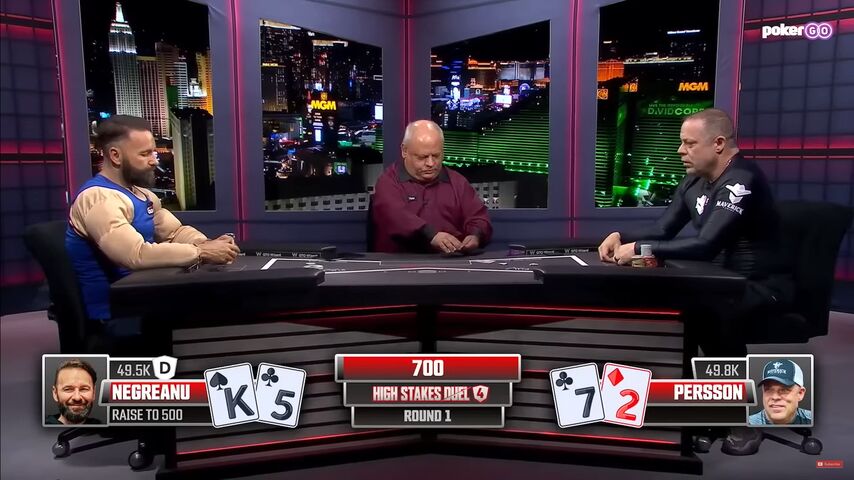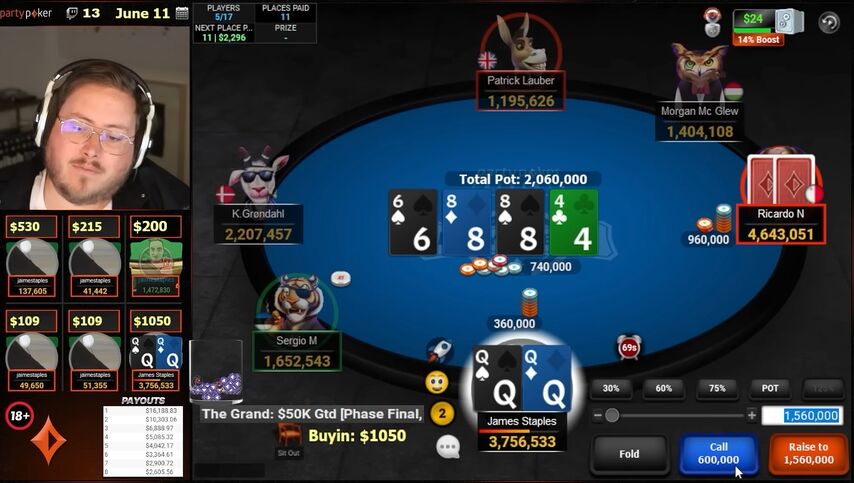What is a raise in poker?
A raise in poker is when a player made a bet, but another player increased the wager. When a player makes a bet in poker, there are three options:
- Fold your hand and wait for the next game.
- Call the bet, meaning you match the bet.
- Raise, meaning you increase the bet size and other players must match it.
Poker players usually make raises to get more chips from their opponents or to “bluff” and make their opponents fold a stronger hand.
There are some important rules for a raise in poker, which we will clearly explain. By the end of this 5-minute article, you’ll know more about raising in live and online poker games.

How to Raise in Poker
Poker games like Texas Holdem, Omaha, and Stud Poker give players the option to raise, as well as call.
In live poker games, you can announce “raise” and then decide the amount. For online poker, you’ve just got to choose your raise size.
To raise in poker, you must select a larger bet size than the current bet size. If a player has bet $5, if you increase the size to $10, that is a raise. There are rules for the size your raise must be.
What is the Minimum Raise in Poker?
The minimum raise size in poker must be in increments of the previous bet size or big blind size preflop. If a player ahead of you bets $5, you cannot raise it to $7 – you must make the raise $10 or more. If you want to make a preflop raise, you must make it double the amount of the big blind. If the big blind is $6, your raise must be to $12, at least.
What is the minimum re-raise (3-bet) in Poker?
A 3-bet (also known as a re-raise) must be as big of a raise as the previous raise. For example, if there is a $5 bet, then a player makes it $10 by raising, the 3-bet must be a $15 minimum.
The minimum 3-bet is (the amount of chips the raiser put on the table, plus the amount the previous raiser added to the bet).

As you can see from our PokerStars Play Money example, the 3-bet is 1400 chips. The first bet was 100, then the raise was 650 extra, to a total of 750. This means the minimum 3-bet is 750 + 650 = 1400.
If you want to gain familiarity with something, you need to experience it. We’ve reviewed tons of different poker sites, some with free play options for practice.






What is The Maximum Raise in Poker Games?
Some forms of poker put limits on raises, while others have no limits, letting you bet your full stack in one action.
NL or No-limit poker games are exactly as they sound – there is no limit to your raise size. When it is your turn, you can move all of your chips into the pot if you choose. No-limit Texas Holdem is the version that most players know from casinos and online poker sites. In no-limit games, the maximum raise is only limited by how many chips you have.
PL or Pot-limit means that the raise can not exceed the size of the pot. Let’s say that there is $30 in the pot and a player makes a bet of $30. If you call for $30, the pot size will be $90. The maximum raise will be $30 + $90 = $120. Some games like Omaha poker are better played with pot-limit rules.
FL or Fixed limit games have fixed raise sizes and do not allow unlimited betting. Bets and raises are made in increments, so calculating the minimum and maximum raises is much easier. In a fixed-limit game with $1 and $2 blinds, if a player bets $2, the raise must be an additional $2 (for a total of $4). Stud poker is usually played with a fixed-limit betting structure.
You can find different kinds of betting limits and poker games in our guide.
When to Raise in Poker
The strategy for raises in poker can change depending on what you want to do.
Some players raise for value, meaning they have a strong hand and want to create a larger pot. When players do this, there’s a chance that their opponent might fold since they must risk more money.
You can raise to make your opponents fold – and you definitely should work on this aspect of poker strategy. A big raise might be just what you need to win the pot, but it won’t always work. This is why professional poker players get familiar with ranges, which are all of the hands they expect their opponents to have. That helps them choose when to raise and when to play more passively.

In this partypoker tournament, Jamie Staples is a tad worried that his opponent may have raised for value.
New players aren’t raising enough, but only raising when you have a strong hand is an equally bad strategy. You want to create value when you have a strong hand, but that won’t happen if everyone at the table knows the strength of your hand. This is why experienced players take a mixed approach to poker strategy, blending good hands with mid-strength (and bluffs too).
Do some experimenting with your raise sizes in poker freerolls. You can still win plenty of cash prizes, but you won’t need to put any money onto a poker site.
- Increased first deposit bonus
- Increased rakeback and reloads
- Help with deposits and cashouts
- Access to private freerolls
- Round-the-clock support


















